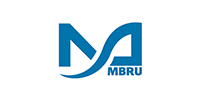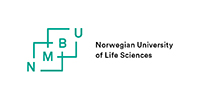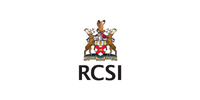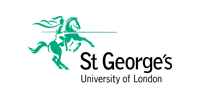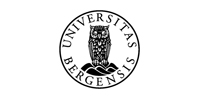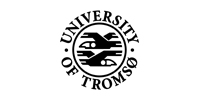Anatomy and kinesiology
The humerus, ulna and radius collectively form the elbow joint (cubital joint). At the humerus one can distinguish, besides the condyle, the lateral epicondyle (attachment site of the wrist and hand extensors) and the medial epicondyle (attachment site of the wrist and hand flexors). On the medial side of the distal end of the humerus, the humeral trochlea is found and this forms one joint with the ulna. On the lateroventral side, the capitulum of the humerus forms a joint with the radius. On the proximal end of the radius the radial head is found and the olecranon is located at the proximal end of the ulna [Figure 63]. Furthermore, in vivo the medial and lateral supracondylar ridges of the humerus can be partially palpated, and the posterior border of the ulna can be palpated along the entire length. The radial head and the distal radius (approximately 10 cm) can also be palpated.
 Figure 63: anterior view (left) and posterior view (right) of the elbow
Figure 63: anterior view (left) and posterior view (right) of the elbow
1 humerus
2 lateral epicondyle
3 medial epicondyle
4 olecranon
5 head of the radius
6 radialtuberosity
7 ulna
8 humeroradial joint
9 humeroulnar joint
At the elbow joint the following joints can be distinguished:
- humeroulnar joint (saddle joint which functions as a hinge joint)
- humeroradial joint (functions as a ball and socket joint)
- proximal radioulnar joint (functions as a pivot joint).
The elbow joint has the following movement capabilities:
- flexion and extension take place in the humeroulnar joint and the humeroradial joint;
- pronation and supination take place in the proximal radioulnar articulation (the radius rotates around its own axis and distally, in the lower arm, the radius and ulna rotate around each other) and the humeroradial joint.
The extension angle in men is approximately 0°. In children and women a few degrees of hyperextension is often seen. Flexion measures approximately 150°-160°. Pro/supination measures approximately 90° from the midpoint.
The elbow joint is laterally and medially surrounded by supportive structures in the joint capsule, consisting of collagenous fibres that are considered to be part of the collateral ligaments of the radius and the ulna and the annular ligaments of the radius. These fibres partly radiate out into the inter- and intramuscular connective tissue septa of the flexor and extensor musculature. In addition, a bursa (subcutaneous olecranon bursa) is located on the dorsal aspect of the olecranon, which with excess pressure on the elbow can result in bursitis (‘student’s elbow’).
The (clinically) most important muscles that have a function in the elbow are:
- brachialis muscle
- origin: humerus and intermuscular septum (lateral and medial)
- insertion: ulnar tuberosity and coronoid process
- biceps brachii muscle
- origin: supraglenoid tubercle of the scapula and glenoid labrum (long head) and coracoid process (short head)
- insertion: radial tuberosity and antebrachial fascia (via the bicipital aponeurosis)
- brachioradialis muscle
- origin: lateral supracondylar ridge of the humerus and the intermuscular septum
- insertion: directly proximal to the radial styloid process
- extensor carpi radialis longus and brevis muscles
- origin: lateral supracondylar ridge of the humerus (long) and lateral epicondyle (short)
- insertion: base of metacarpal bones II (long) and III (short)
- extensor digitorum muscle
- origin: lateral epicondyle and antebrachial fascia
- insertion: proximal, medial and distal phalanx II through to V (spreading out into the dorsal aponeurosis of the fingers)
- extensor carpi ulnaris muscle
- origin: lateral epicondyle and antebrachial fascia
- insertion: base of the metacarpal bone V
- triceps brachii muscle
- origin: infraglenoid tubercle of the scapula (long head); dorsal fascia of the humerus and intermuscular septum (medial head and lateral head)
- insertion: olecranon and ulna (via antebrachial fascia)
- flexor carpi radialis muscle
- origin: medial epicondyle and antebrachial fascia
- insertion: base of the metacarpal bones II and III
- flexor carpi ulnaris muscle
- origin: medial epicondyle and antebrachial fascia
- insertion: pisiform bone.
Terminology
‘Referred pain’. The pain is indicated to be at a different site (usually distally) to the source. Contrary to the shoulder, this is seen less frequently in the elbow. Pain in the elbow is often actual pain in the elbow, with possible radiation to the lower and upper arm (dermatomes C5, C6, C7). In the case of negative elbow examination findings, consider the possibility of ‘referred pain’ originating from disorders of the cervical vertebral column or shoulder.
Cubitus valgus. In the anatomical position, the lower arm exhibits abduction relative to the upper arm, known as valgus. This is more pronounced in women than in men.
Hueter’s line. The olecranon and both epicondyles form a straight line when the elbow is stretched [Figure 64].
Hueter’s triangle. With a 90° flexed elbow, the olecranon and both epicondyles form an equilateral triangle [Figure 65].
 Figure 64
Figure 64
 Figure 65
Figure 65







